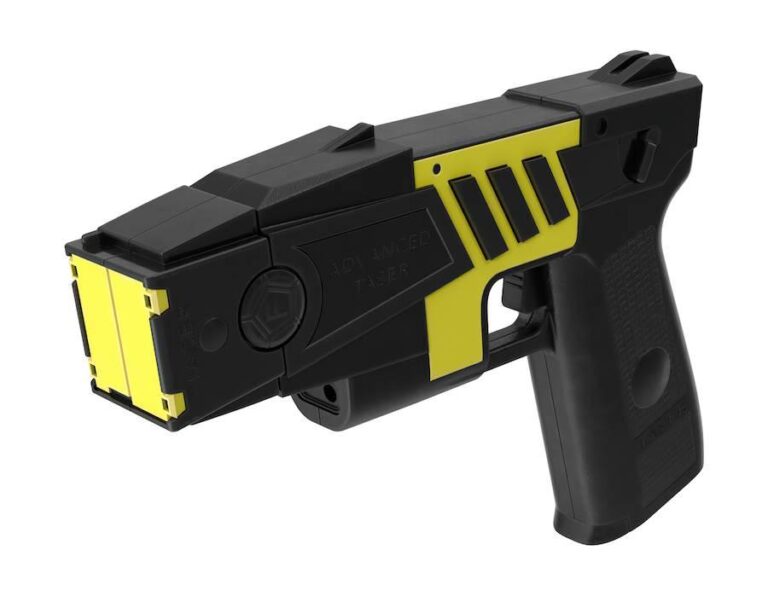Table of Contents
- Legal Requirements for Concealed Carry of Stun Guns in Public Spaces
- Jurisdictional Variations and Compliance Tips for Stun Gun Owners
- Understanding Permits and Restrictions for Concealed Stun Gun Carry
- Best Practices for Safely Carrying and Using Stun Guns Legally in Public
- The Way Forward
Legal Requirements for Concealed Carry of Stun Guns in Public Spaces
Before carrying a stun gun concealed in public, it is crucial to understand the legal framework that governs its possession and use. Laws vary significantly by state and even local jurisdiction, often dictating whether a permit or license is necessary. In many areas, individuals must be of a certain age (commonly 18 or older) and may be required to complete a background check or firearms safety course. Additionally, certain places such as schools, government buildings, or private properties may explicitly prohibit carrying stun guns, regardless of concealment status.
Key points to consider include:
- Whether a permit or registration is legally mandated to carry concealed stun devices.
- Restrictions on where stun guns can be carried or used, including sensitive locations like airports or courthouses.
- Variations in the definition of concealment and acceptable methods for carrying.
- Consequences of unlawful possession, which can range from fines to criminal charges.
Jurisdictional Variations and Compliance Tips for Stun Gun Owners
When it comes to carrying stun guns, laws can differ dramatically from one state or municipality to another, making it crucial for owners to stay informed. Some regions impose strict restrictions on possession, while others may allow stun guns but prohibit their concealed carry without a permit. In certain areas, size limitations, power output caps, or specific bans on carrying the devices in government buildings or schools can apply. Understanding these localized regulations not only helps avoid legal troubles but also ensures responsible ownership and use.
To maintain full compliance, consider these essential tips:
- Regularly review state and local laws, as regulations can change frequently.
- Obtain any required permits or licenses before carrying a stun gun concealed in public.
- Keep documentation, such as receipts and permits, handy to show law enforcement if requested.
- Use the stun gun only for self-defense purposes and avoid brandishing it unnecessarily.
- Seek legal counsel if unsure about the rules in your area or when traveling between jurisdictions.
Understanding Permits and Restrictions for Concealed Stun Gun Carry
Before deciding to carry a concealed stun gun, it’s crucial to understand that regulations can vary widely by state and even by municipality. Some areas require a specific permit or license for carrying any type of self-defense weapon, including stun guns, while others may have outright prohibitions. Often, these laws are designed to balance public safety concerns with personal defense rights, creating a complex legal landscape for individuals to navigate.
When evaluating the requirements, consider key points such as:
- Permit necessity: Some states demand a concealed weapons permit, while others allow stun guns to be carried openly or concealed without additional licensing.
- Age restrictions: Most jurisdictions set a minimum age for possession and carry.
- Restricted locations: Certain places like schools, government buildings, and airports may prohibit stun guns regardless of permit status.
- Transportation rules: Some laws dictate how a stun gun must be stored or transported when not in use.
Best Practices for Safely Carrying and Using Stun Guns Legally in Public
When carrying a stun gun in public, it is crucial to prioritize safety and legality. Always ensure the device is securely concealed and easily accessible in case of an emergency. Avoid displaying it openly, as doing so may attract unnecessary attention or be considered a threat under local regulations. Before use, familiarize yourself with the stun gun’s operation, including how to activate and deactivate it, to prevent accidental discharge. Additionally, maintaining the device in good working condition through regular checks helps ensure reliability when needed most.
To carry and use your stun gun responsibly, keep these points in mind:
- Understand the laws specific to your state or municipality regarding stun gun possession and use.
- Use the stun gun strictly for self-defense and in situations where you feel genuinely threatened.
- Never brandish or use the device to intimidate or threaten others unnecessarily.
- Store your stun gun in a way that prevents unauthorized access, especially by children.
- Consider carrying proof of purchase or permits if required by local law enforcement.
The Way Forward
In conclusion, understanding the legal rules surrounding the concealed carry of stun guns is crucial for responsible ownership and personal safety. Laws can vary significantly by state and even by local jurisdiction, so staying informed and up-to-date is essential to avoid legal pitfalls. Always make sure to research your area’s specific regulations, obtain any necessary permits, and use your stun gun in a manner consistent with the law. By doing so, you can confidently carry your device while respecting legal boundaries and contributing to a safer community. Stay safe and stay informed!Check Our Other Blogs
- StunGun – Your Trusted Source for Stun Guns, Laws, and Self-Defense Tips
- PepperSprayLaws – Your Trusted Resource for Pepper Spray Information
- StunGunLaws – Your Trusted Guide to Stun Gun Legality and Safety





